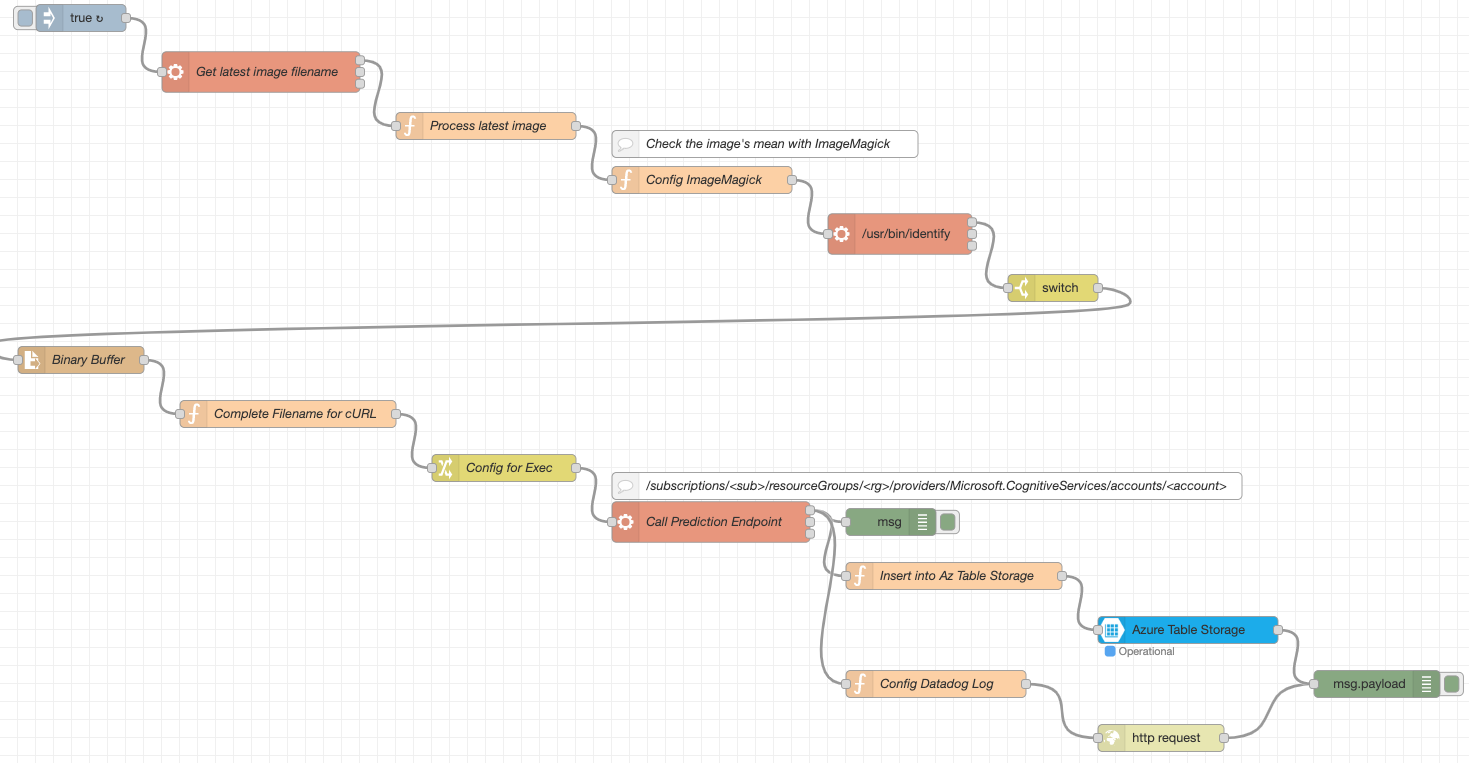node-red Security Camera Project for Raspberry Pi
- to have a couple Raspberry Pi constantly taking home security photos.
- uploading the photos to cloud-based blob storage service; I ended up with AWS but Azure Blob Storage Node worked nicely too.
- to persist the image only if it has a quality worth keeping (ie. no black images at night).
- to purge old images; prevent the system from just filling up the drive.
- to save some operational information; to confirm the system was running correctly.
- gather statistical reporting numbers; tallying the storage being consumed.
- Raspberry Pi w/ Camera Module
- Python PiCamera Module
- ImageMagick Software Package
- Node-Red
- Amazon Web Services Account
- (optional) Splunk for Operational Reporting
- (optional) Datadog for Operational Reporting of the Custom Vision AI
- Python script takes photo every 30 seconds and saves it locally to Pi drive.
- Node-Red flow watches the pictures folder for changes.
- Prior to saving the image to AWS S3 cloud storage the ImageMagick "identify" application is called in order to process the image's "blackness" value - if the image is too dark it will not be saved.
- If the image quality is good the flow saves the photo to AWS S3 blob-storage.
- S3 policies move older photos to Glacier storage to save on costs; an additional policy will purge/expire the images from AWS.
- In parallel to the save operation the system saves operational metadata to a local Splunk infrastructure.
- The Node-Red flow also has a sub-flow that periodically deletes old images from the Pi and saves the details to Splunk.
- A new flow has recently been added which once every hour takes the most recent image and runs it through a custom computer vision AI algorithm which has been trained to identify "normal situations" at my house.
- The output from the computer vision AI is saved to Azure Table Storage for future analytical processing.
The Node-Red project is on GitHub
